S’pore entrepreneurs reveal 4 fundamental rules to finding and choosing the “right” co-founder

The first time I met Sushant Shankar in 2019, he was a confident data scientist who appeared intrepid at times about the realm of consumer analytics and AdTech that he specialised in. He told me how he kickstarted his entrepreneurial journey as a co-founder of a MedTech company with a Stanford cardiologist, a stranger he met through a professional networking site.
Dr. Rajesh Dash, Sushant’s business partner, is two decades older. As a medical professional, his knowledge of technology has never gone beyond what’s been reported in the news.
‘So how do both of you work?’ I asked, expecting to hear some drama. Sushant’s answer was simple: patience. He and Dr. Dash established a common ground of building a company together since the start and gave each other frequent feedbacks on how the business could be improved.
It’s not rocket science, Sushant said matter-of-factly as his eyes search for opportunities to reify my seeming concerns.
As much as founders are striving to build unicorns, they are often, unknowingly searching for one. Likewise, co-founders are also elusive, rare, and even magical — if the right alchemy is set to turn water into elixir.
But in today’s world, where co-working spaces and startup incubators are abound, it’s easier than ever to swipe left or right to find a potential partner. So, what does it take to be the “right” one?
I chatted with some local entrepreneurs who have navigated the startup landscape with their families, friends, and acquaintance to discover the secret sauce for a successful partnership. Ultimately, what are some of the criteria that founders favour and how should you woo the business partner of your dreams?
Trust
Like the way most of us trust coffee will help kickstart our day, founders want to work with people they can rely on — that’s why some of them were not deterred to work with their closest confidants.
“Since the three of us are long-time friends, our working relationship began with a strong foundation of basic trust,” said Gerald Tan, who founded award-winning meal prep startup YummyBros, with his gym buddies Ben Leu and Anson Lim.
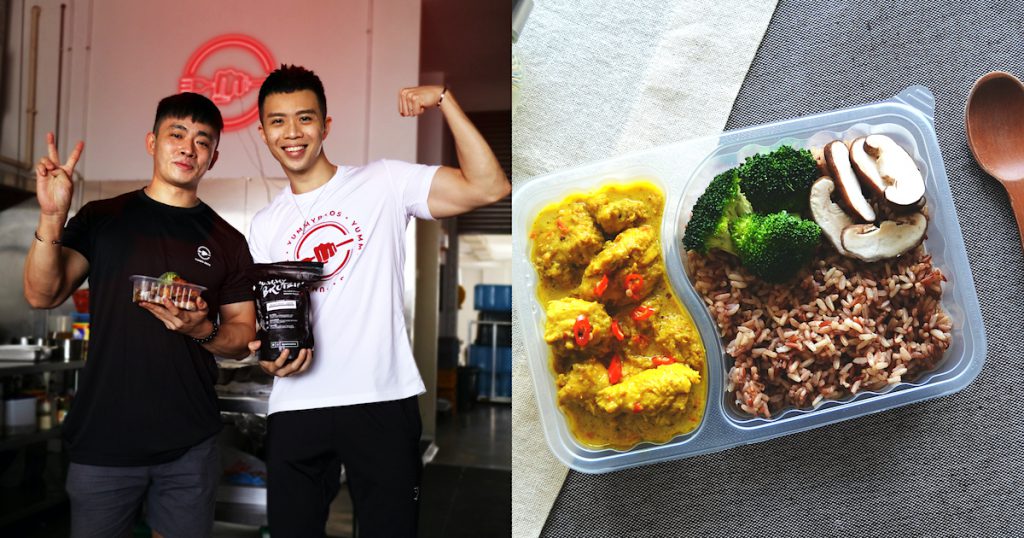
It didn’t take much for the trio to understand each other’s respective strengths, weaknesses, and work-related tendencies. The long-time friendship had injected them with a sense of brotherhood, which propelled them to stay accountable to one another.
Gerald believes this is what makes his business agile, allowing it to grow rapidly within a short period of time.
“We didn’t even spend much time on settling the legal logistics. The three of us simply trust that we have the same goal of running the business together,” he added.
For Lydon Ong, he started manscaping brand BOVEM with Norman Teo when they were both final-year business students at the Singapore Management University. He explained that trust does not have to be stuck with like-minded individuals who agree on everything — be it about wearing socks with sandals, or the idea that durians are pungent.
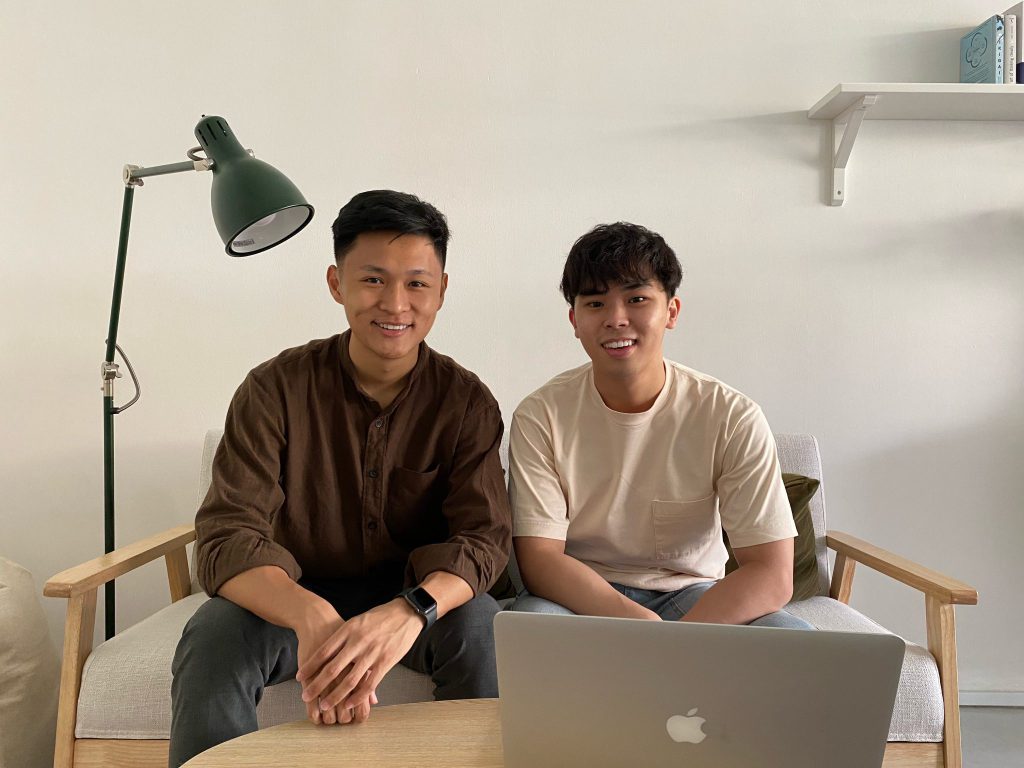
“But founder and co-founder need to have shared vision and values and trust one another to be on the same page when it comes to certain important stuff,” he noted.
At the same time, Gerald warned against the danger of groupthink.
Sometimes, we tend to overly favour and side with one another’s views when it comes to making business decisions. This prevents us from seeing things objectively. Blind trust is not trust. It’s something we try to avoid. The company’s and customer’s needs will always come first.
– Gerald Tan, co-founder of YummyBros
Open to communication
It’s true that founders don’t just nibble on trust alone. There’s a silent agreement on how open communication should be the “main course” here. “As the saying goes, communication is key,” Lydon offered.
Together with Norman, they would make it a point to dish out honest conversations when their ideas and opinions don’t align. They may not always see eye-to-eye but will reach a resolution that acts in the company’s interest.
It’s not easy. Yet, whether it’s discussing the best way to market a new product or how pizza is best enjoyed – with or without pineapples — we will find time to listen to each other. We found that respectful.
– Lydon Ong, co-founder of BOVEM
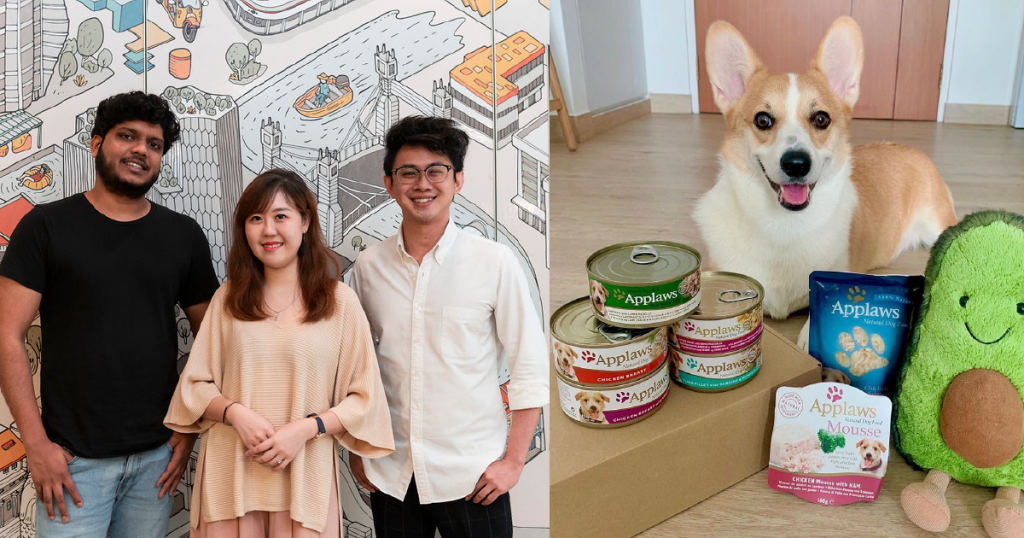
Jane Peh, who co-founded pet marketing agency Pawjourr with her husband, shared the same sentiments.
“Work is work. It’s important not to bring emotion into the picture and try to be rational about the issue at hand, even though there have been times (maybe a little too many) when I just want to smother him with a pillow when he sleeps,” she quipped.
Jokes aside, Jane said once she managed to find a balance between working and living, she sees the benefit of having her life partner as her co-founder — someone who always has her back.
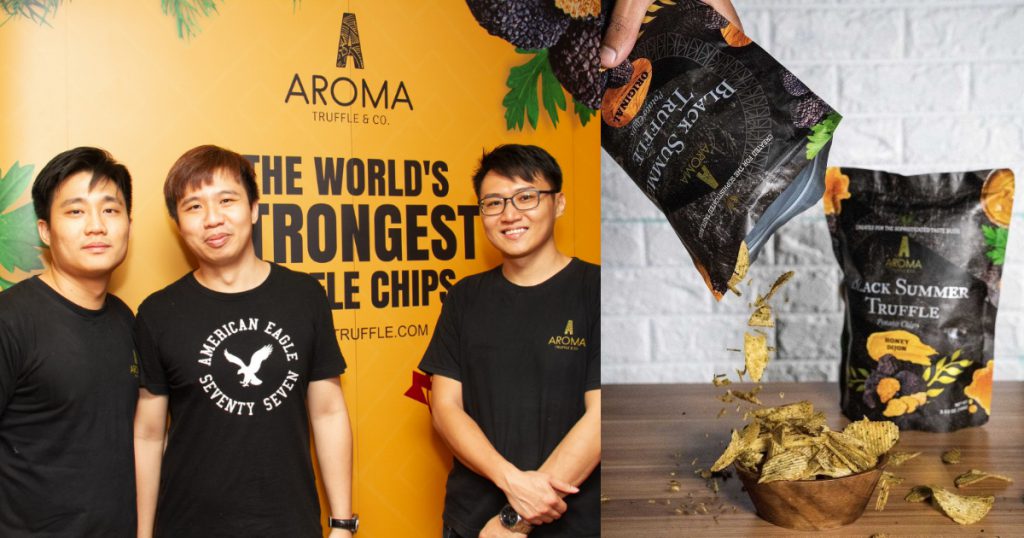
Kayson Chan, who runs gourmet snack, Aroma Truffle, with his brothers Kenny and Jonathan, also sees open communication as an advantage in a family business.
“Within a family, there is more room for candid discussions and the expressions of diverse opinions, which ultimately benefit the business operations,” he explained. Kayson trusts that family members can work more seamlessly so urgent issues can be promptly addressed, making the business less susceptible to unexpected changes.
Indeed, we have access to each other 24/7 to talk about work. We understand each other fundamentally and openly and can have honest conversations about risks, future, as well as the non-negotiables like when things don’t go according to plan.
– Jane Peh, co-founder of The Woof Agency
While transparency drives honesty, it comes with a cost. “The work-life balance aspect of our friendship definitely took a hit,” Gerald lamented.
“Whenever we meet for a workout or meal, we always find ourselves talking about work. We can be panting in between heavy sets of bench presses and still brainstorming about new menu items or initiatives to improve customer experience. In short, it’s [tiring].”
Complementary skills
Nonetheless, running a business can sometimes, feel like walking on a deserted island.
Jennifer Widjaja did not start Just Dabao, her social enterprise targeting at reducing food waste, with a co-founder.
Though she enjoyed the freedom to work at her own pace and all the subsequent profits, she’d love to be complemented and grow her business with companions who have diverse skillsets and perspectives.
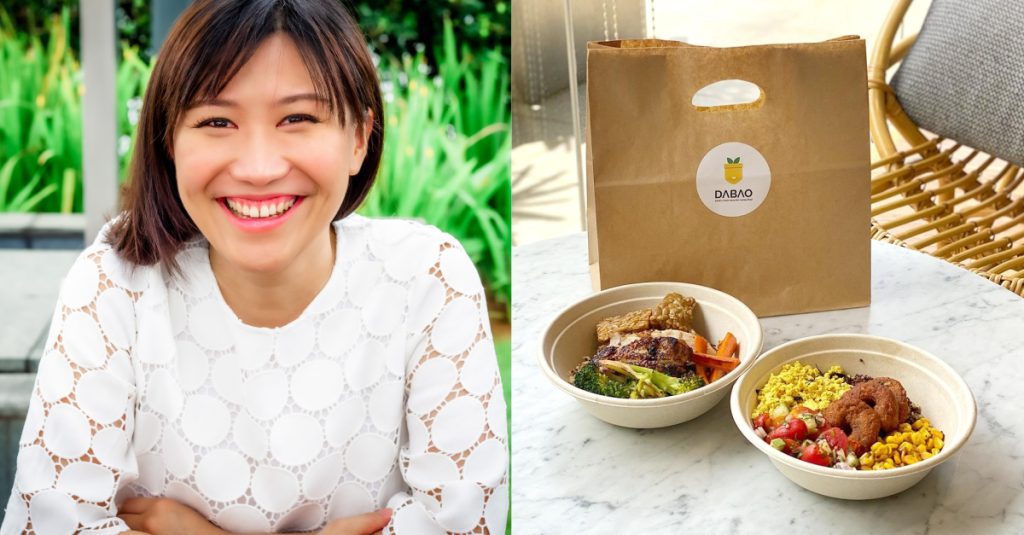
On this note, Kayson cited American author Jim Collins’ analogy. In his book titled “Good to Great“, Collins said that “those who build great organisations make sure they have the right people on the bus and the right people in the key seats before they figure out where to drive the bus”.
At Aroma Truffle, this translates to assigning each brother to oversee a specific division. Kayson’s elder brother now handles operation and finance, and his second brother manages production and R&D.
They believe that by separating their roles, they take ownership and responsibilities for their divisions. In a way, this will minimise disagreement and avoid blame-shifting.
Again, this complementary skillset sentiment is also shared among other founders, including Low Ser En, who started a personalised video gift platform, SendJoy, with her former colleague LC.

According to her, LC was the one who introduced her to the concept of entrepreneurship. Since they’ve already collaborated on small projects in their previous company and understood each other’s work ethics, it’s even more comfortable for them to share greater responsibilities as a team.
“I strongly advise, while searching for a co-founder, look for someone with complementary skills and a shared vision,” shared Lydon. “Concurrently, set boundaries and communication channels to make sure the business and relationship can thrive concurrently.”
Setting boundaries
“I’ve found that working with a friend tend to amplify the emotional aspect of business disagreement. This kind of disagreement is extremely difficult to contain and often lead to irrational outcomes. That’s when we learn to set boundaries and keep personal biases aside.
– Gerald Tan, co-founder of YummyBros
Boundaries are like a well-built fence — it keeps the business in and unwanted drama out. After all, running a business with someone you know can be like walking on a tightrope, so setting up some limits will prevent any awkward falls.
Ser En also emphasised on having empathy. “As much as we separate work and personal issues, we listen actively and try to understand each other’s perspectives,” she said.
“I think we need to give each other the time and space to express their emotions about a particular disagreement or decision that’s about to be made. So that we can address, rather than bottling up, any upset and concerns, which is detrimental for our mental well-being too,” added Gerald.
The hunt for the right business partner is not easy
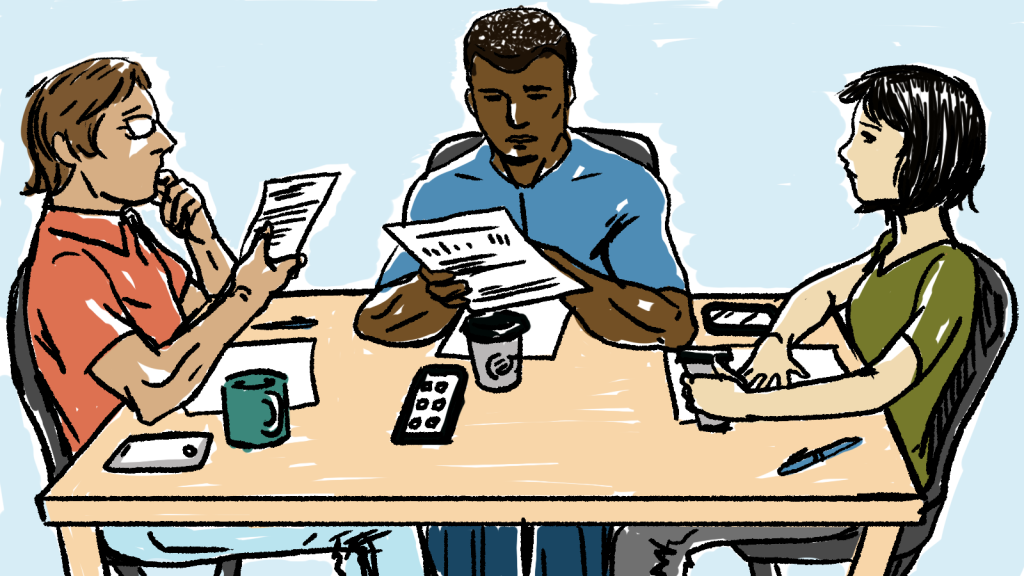
In sum, whether it’s a stranger or its opposite, the co-founder hunt can be overwhelming, especially in Singapore where being an entrepreneur is not a natural occupation that people would choose.
“The pool of people looking to start their businesses is small. The pool is even smaller trying to find someone who is interested in what you are building and suitable to work in a startup,” Jane noted.
“The process of finding a co-founder can be time-consuming and frustrating,” Lydon added. “This can take a toll on your energy and resources, as you are already busy with building your startup. But bear in mind that running a business alone is no better. It’s like a one-man band where you must be the lead-sing, guitarist, and drummer all at once.”
“Frankly, my cheat sheet is to establish yourself as a business leader first,” Gerald suggested. “People follow those who know where they are going and what they are doing. By being a leader, potential co-founders will be more compelled to join and follow you in your entrepreneurship journey.”
Featured Image Credit: Cloudways
Also Read: The S’pore gov’t invested billions into SkillsFuture, but are they much help in upskilling?
This new M’sian superapp has one simple goal: make planning group sports easier
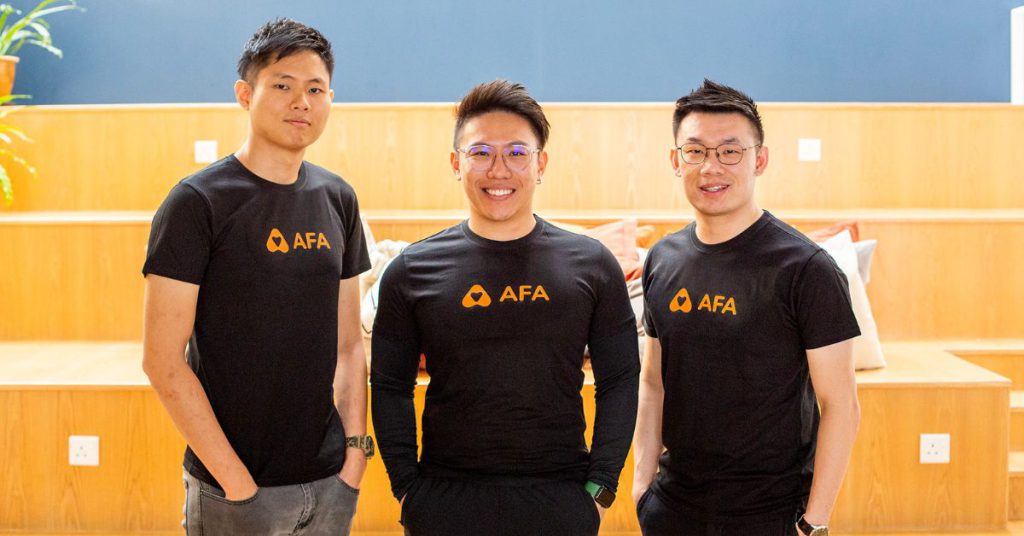
On March 11, a new Malaysian superapp was launched. Unlike the other superapps we’ve come to know, this one is a little bit different, as it’s not about food delivery, e-hailing, or the like.
This one is all about sports, which is why its launch was officiated by Hannah Yeoh, our Minister of Youth and Sports.
Created by AFA Community, the AFA Superapp is a community app that aims to connect people through sports, featuring tools for easily organising activities, managing RSVPs, booking venues, and more.
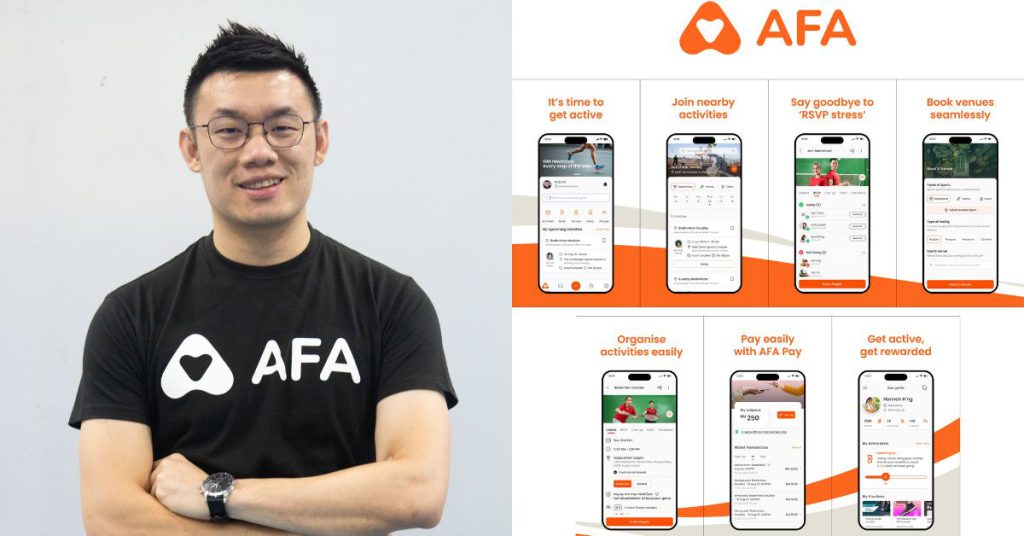
Some might think this sounds similar to the already existing AFA venue booking app, and they’d be right. AFA Community itself is a member under the Athletes for Athletes (which is where AFA comes from) management, which created the venue booking app.
So, why this new superapp?
For Samuel Siew, the CEO of AFA Community, the story starts all the way back in 2018. At the time, he was working with the Football Association of Malaysia (FAM). There, he was building a grassroots brand called ‘SupaRimau’ Charter.
This brand would allow all football academies to register their players into the system and enjoy privileges from FAM’s brand partners.
According to Samuel, the system took only three months to build, and it grew to accommodate more than 100,000 players in the year alone.
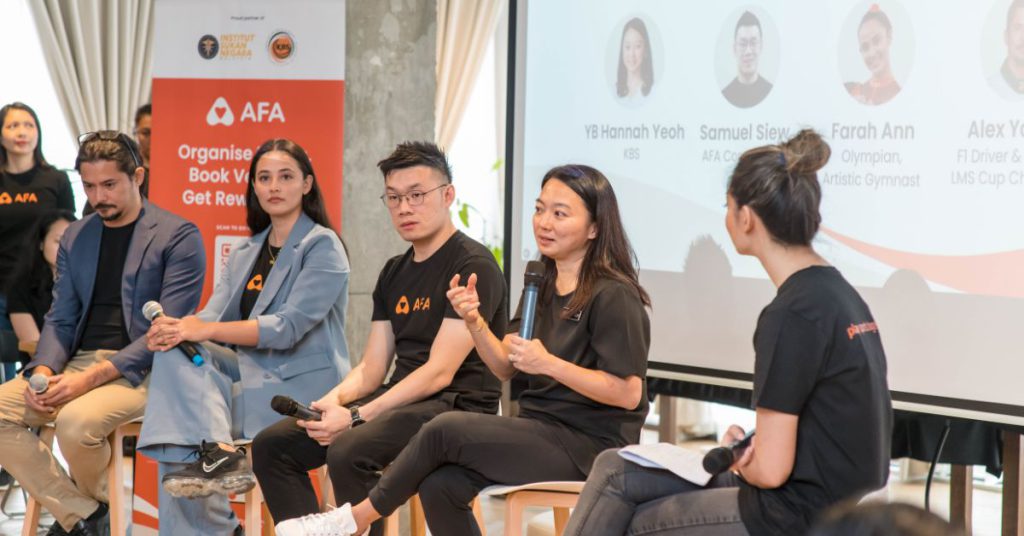
“I knew there would be potential to replicate this across the sports industry,” he decided.
The idea brewed for a while, and in early 2022, he returned to Malaysia after a stint in London working with Train Effective—an app by Rio Ferdinand, an English former professional footballer.
In July, he connected with Raymond and Edwin, who built the B2B AFA venue booking app. The trio started talking about how a sports superapp could help to grow the sports community locally.
“People who are into sports would already be doing activities on a regular basis,” he said. “The big idea I had was to add value to their experience and also expand that community. Sports is about people, after all.”
From the B2B app to a superapp
AFA was first started by Raymond, who has experience operating sports facilities, and Edwin.
He and Edwin, together with some friends, would organise social badminton games every week and it was during this time that they identified a few gaps.
For one, players often needed to contact a few venues before being able to get one available for booking. The venue owners also often found it a challenge to secure reservation fees or manage the financial integrity of their staff.
So, they created a B2B app that allowed partnerships and onboarding with sports venue owners by providing four key automation solutions—a booking system, IoT lighting systems, vending machine and kiosk solutions, as well as a POS system to manage inventory.
When Samuel came into the picture, that app had already matured over two years under Raymond and Edwin’s leadership.
Believing the superapp concept would fit well into AFA’s existing ecosystem, they combined Samuel’s experience and influence from the local football grassroots scene with the Raymond and Edwin’s own resources.
By September 2022, Samuel was working on building the AFA Superapp with a UI/UX designer. In November 2022, AFA Community was born.
About the app
Compared to its predecessor, the new superapp is consumer-facing, allowing users to invite friends through activity-based features. This would be crucial for venue owners who want to retain users who were already making regular bookings through the app.
“The main focus of the AFA Superapp revolves around creating and joining activities,” Samuel elaborated. “Our goal is to scale the number of activities created through the app so that usage is no longer tied to venue bookings alone.”
As a community-centric app, it aims to actively engage users and bring people together, including more people who are new to sports so they can make new friends. The app also hopes to ease the process of finding activities, classes, coaches, and the like.
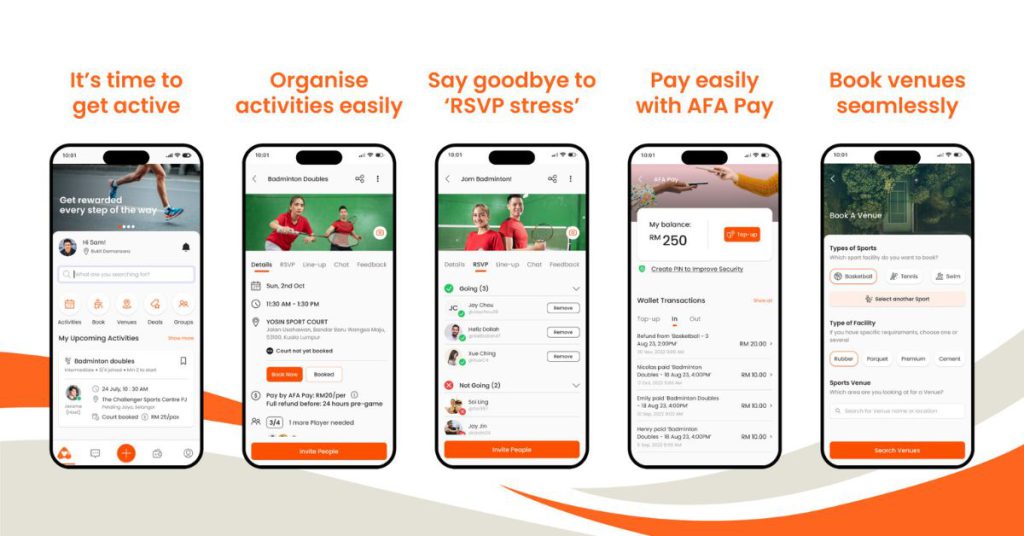
Users can also use the app’s AFA e-wallet to make direct payments.
The former AFA Venue Booking App will be revamped into the new AFA Superapp and made available on the iOS Apple Store and Google Play Store.
At the time of writing, from what we can see, the app hasn’t been updated just yet.
Support from the government and grassroots
Hannah Yeoh was also at the AFA Superapp launch because AFA is actually supported by the Ministry of Youth and Sports Malaysia, as its platform helps make government sports facilities more accessible too.
Other than that, AFA encourages transparency in managing the funds collected by sports facilities.
This support goes both ways, as the data collected by AFA such as the number of people who are active in sports across each city and state will help the ministry make more informed decisions.
According to Samuel, this partnership came through an initiative of Institut Sukan Negara (ISN), which is under the Ministry of Youth and Sports, when they rolled out Phase One of the innovative sports technology programme for startups back in 2020.
Other than governmental support, AFA is also seeking financial support through equity crowdfunding (ECF).
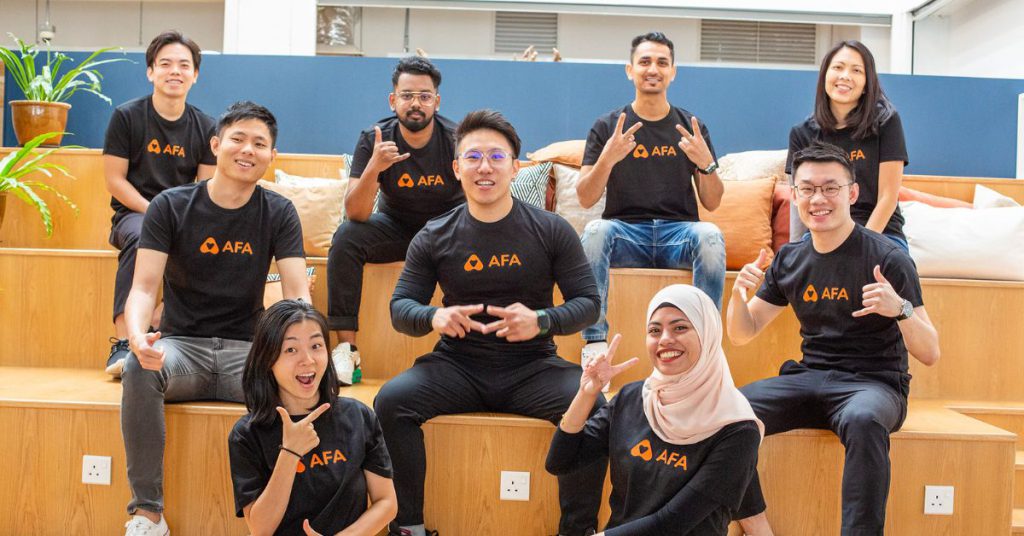
“AFA was already profitable before this from booking transactions, software subscriptions from the venue vendors, as well as management of venues,” Samuel clarified. “The funds we are now raising are mainly to expand our product features and other market expansion purposes.”
AFA’s updated monetisation model involves three main categories. Booking and subscription fees from venues, a premium membership subscription model from users, as well as advertising and partnerships.
The team believes that ECF is the best route for them to open up investment opportunities for the public, as their eyes are set on an IPO.
“This is in line with the concept of ‘By the community, for the community’,” the AFA Community CEO added. “We are open to considering other fundraising mediums in the future as well.”
Partnering up with venues
At the very beginning, it was challenging for AFA to convince sports facility operators that digitalisation is the future.
“We faced some resistance from venue operators mainly because they were still very comfortable with the book and pen booking method,” Samuel said.
However, this mindset changed after the MCO, as businesses are now aware that they have to be open to change and technology in order to survive and thrive.
As Samuel put it, “You can say we came in just at the right time!”
Currently, AFA works with 95 sports venues and is available in 11 states across Malaysia: Kuala Lumpur, Selangor, Johor, Malacca, Penang, Terengganu, Kelantan, Perak, Kedah, Sabah, and Sarawak.
Beyond that, the AFA team also plans to expand its reach beyond Malaysia to connect sports enthusiasts and communities across borders.
Also Read: Navigate hybrid work’s pain points like productivity & security issues via this webinar
Featured Image Credit: AFA Community
This S’pore startup makes tech devices for kids – sold over 1M products across 27 countries
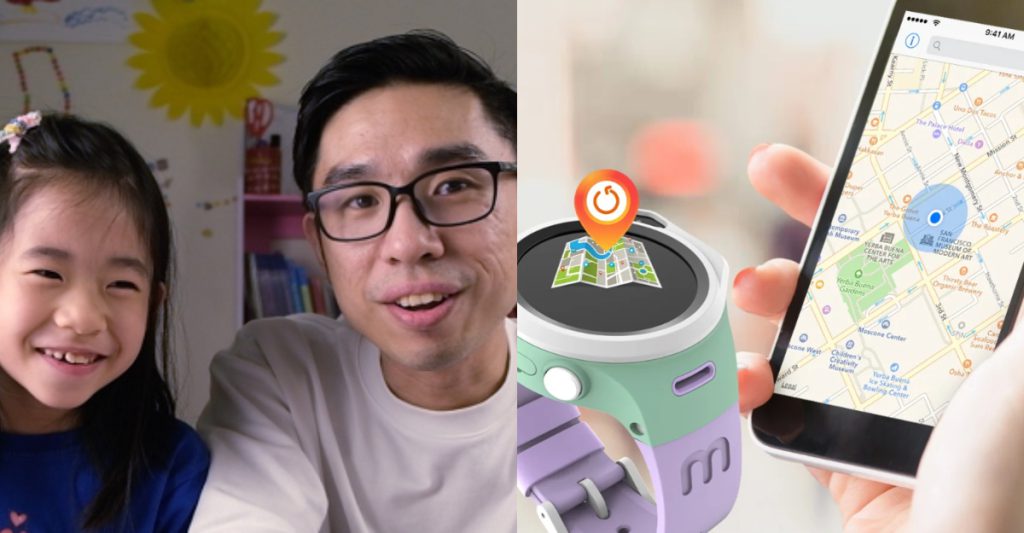
When G-Jay Yong’s daughter, Ru Faye, turned two back in 2017, she grew fascinated with his Canon DSLR camera. She wanted to take photos with the heavy device, just like her father did.
But letting a kid handle a DSLR weighing 2kg is a surefire way to injury (and an expensive one at that), so G-Jay went to hunt for alternatives for his daughter.
He wanted to give Ru Faye her own personal digital camera with similar functionality as the DSLR, but G-Jay was left dismayed. He couldn’t find anything that would suit children in the market.
“There were either ‘grown-up’ cameras, or toys with blinking lights that can’t take decent pictures,” he lamented.
The lack of kid-friendly tech (KidsTech) in the market doesn’t just stop at cameras — there are many other tech gadgets that are not suited for kids, despite the fact that children can greatly benefit from them.
We all live in a digital world and all the tech around us is designed for grown-ups. But what about younger ones? Our kids?
– G-Jay Yong, co-founder of myFirst
Seeing a massive gap in the market, G-Jay decided to launch myFirst to provide children access to a safe and accessible digital world.
Creating a KidsTech ecosystem
myFirst is G-Jay’s third business venture. He started up his first company while he was still studying at the National University of Singapore, which had brought in a revenue of US$80 million.
His second venture was a business-to-government (B2G) startup which has since exited. Through that venture, he got acquainted with Brian Tan, who was an investor in his startup and the current co-founder of myFirst.
Bootstrapping their way forward, the 41-year-old duo launched their first product in 2018: a kid-friendly digital camera.

By 2019, the duo had launched a full suite of devices, including watchphones (a smartphone and smartwatch hybrid), audio devices and 3D pens, effectively creating a “KidsTech ecosystem”.
Some of these devices come with connected services, such as messaging, voice and video calls, GPS and health monitoring, as well as unlimited data connectivity.
Parents can keep an eye on their kids’ location and geo-fence with advanced GPS, WiFi and GSM for accurate positioning, and connect with them anytime with messages, voice or video calls.
In case of emergency, an SOS button will alert parents — they will know that their kids are safe and are contactable anytime, anywhere.
– G-Jay Yong, co-founder of myFirst
myFirst’s product ideas are inspired by the co-founders’ kids
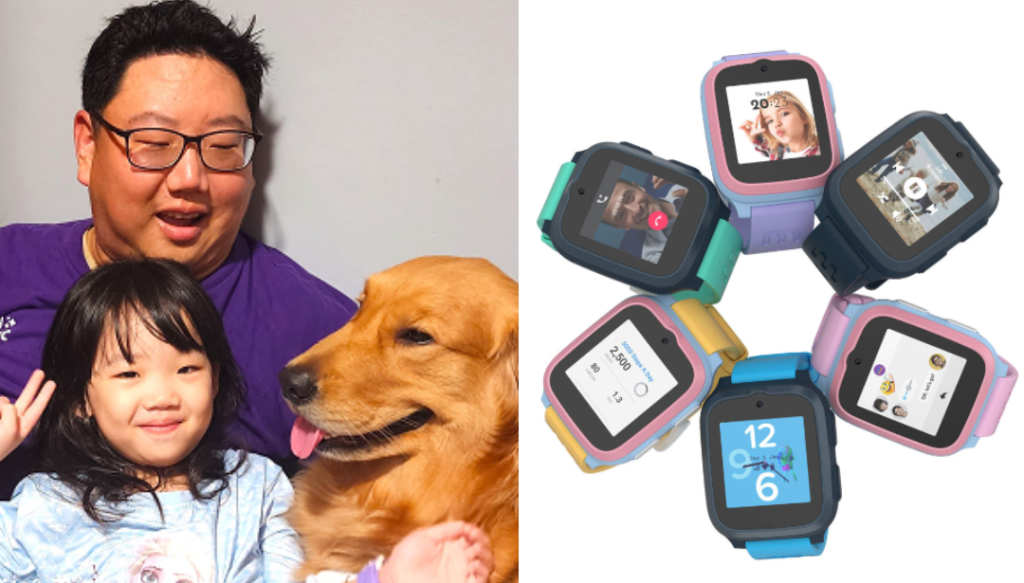
When developing myFirst’s products, G-Jay proudly admits that the duo’s kids were “the product managers” of the company.
In fact, most of the company’s product ideas are inspired by their kids.
It’s quite amazing when we involve our kids in the design process — they actually enjoy the progress. My daughter is involved quite a bit in the brain storming process, design, colour selection, and features of our products.
– G-Jay Yong, co-founder of myFirst

This year, myFirst officially launched myFirst Circle, the world’s first safe call, messaging, location and social sharing platform specially designed for kids, their friends and family to stay connected.
The app allows kids to safely share social posts on the platform for their friends and family to see and has group chat functions, among other features.
The idea behind myFirst Circle initially came to G-Jay and Brian back in 2020 during the pandemic.
“When COVID-19 hit in 2020, [we spent a year] working from home and lots of time with our kids. This gave us the opportunity to understand deeply the needs kids have in staying connected with not just the family, but with their classmates,” he explained.
Hence, G-Jay and Brian cooked up the platform as a way “for kids to stay connected socially, without the usual ills of social media”.
Increasing the awareness on safe tech devices for kids
As a first-mover in the KidsTech industry, G-Jay admits that it had not been easy to market something that is completely new. Convincing retailers to carry their products was challenging, as they did not recognise that there was a need for KidsTech in the market.
“There’s EdTech, STEM, wearable tech, and even smart toys, but the market never specifically had a tech category catered for kids,” said G-Jay.
But after finally persuading large retailers in various countries, the demand for myFirst’s products gradually picked up.
Wherever we go, people are pleasantly surprised as they’ve never seen a company focused on KidsTech, but they immediately understand the gap in the market of fun devices, safe services and socially connected families.
– G-Jay, co-founder of myFirst

However, as the awareness surrounding safe, tech devices for kids grew, the demand for myFirst devices also grew — at a much faster pace than G-Jay and Brian could handle. To keep up with the rapid growth, the duo had to seek external funding, eventually raising US$2.2 million in mid-2022.
Currently, the company has sold more than a million KidsTech devices, and has a presence in 27 countries, including Singapore, Japan, South Korea, the United States of America, United Arab Emirates, and the United Kingdom.
Although the company initially targeted expansion in developed countries with similar economic capabilities as Singapore, such as Japan and South Korea, myFirst pivoted their business strategy after receiving inquiries from less developed countries.
Parents all around the world are willing to spend on their kids as they recognise the difference between real tech and toys.
– G-Jay Yong, co-founder of myFirst
Hence, the company is shifting its focus to countries with a higher population of children, such as Vietnam, Indonesia and Thailand. To bolster its expansion efforts, my First is also currently looking to raise its next round of funding.
Building a safe and suitable digital world for the next generation
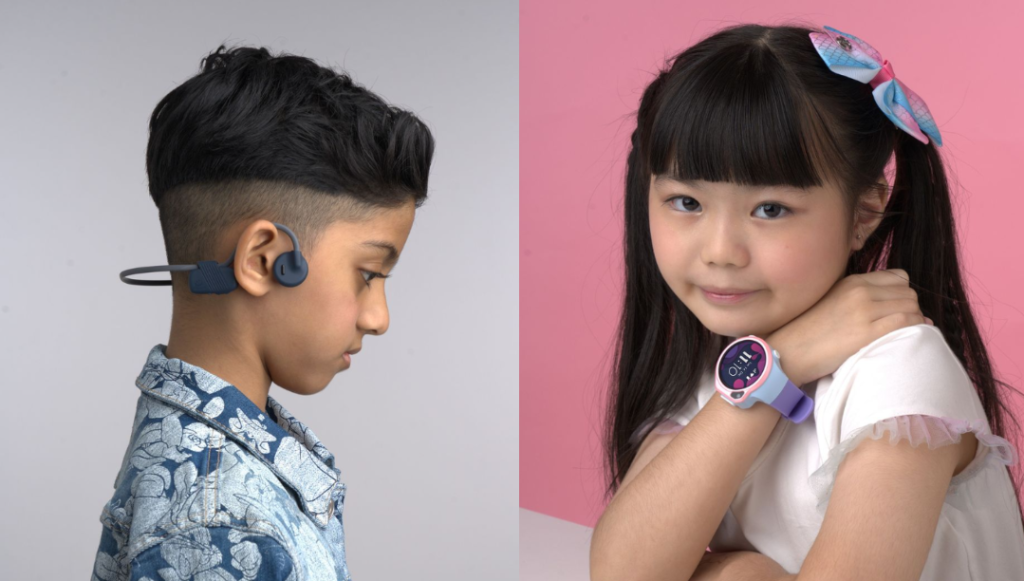
Although there are qualms on the impacts of tech on children, G-Jay firmly views that children can reap significant benefits from tech at an earlier age, given how tech is intertwined in almost every aspect of our daily lives.
From using it for educational purposes in school, to wanting to mirror their parents who utilise tech everyday, exposure to tech is unavoidable for children in today’s day and age.
If kids are not allowed any exposure to tech, but yet all they see around them are grown-ups and their peers using tech, it would most likely feel tempt them and could spell trouble once they are allowed access. It could be really easy for them to over-immerse themselves and get addicted to their devices.
– G-Jay Yong, co-founder of myFirst
This is why he finds that allowing kids to use tech with guidance and advise is a good way to help them utilise tech in a healthy way. By doing this, parents essentially build trust and respect with kids, teaching them to use their devices with self control and discipline.
With myFirst’s devices, G-Jay hopes to build a safe and suitable digital world for children all over the globe.
Featured Image Credit: myFirst
Also Read: Scorpio Electric CEO on disrupting the automotive sector with its first electric motorcycle X1
With 2 unmanned outlets, this M’sian joins the secondhand bookstore club selling cheap books
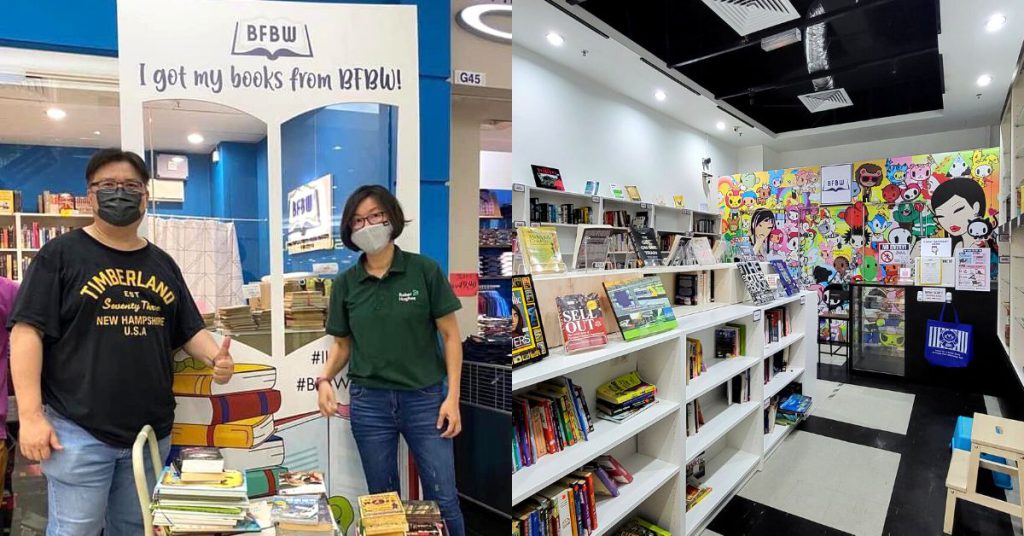
We’re big on reading here at Vulcan Post, so when my colleague Joyce told me she had just frequented a secondhand bookstore, I thought nothing much of it.
But then, she showed me pictures of the vivid, well-organised store and how it functioned on an unmanned concept.
Intrigued, I decided to look deeper into the brand.
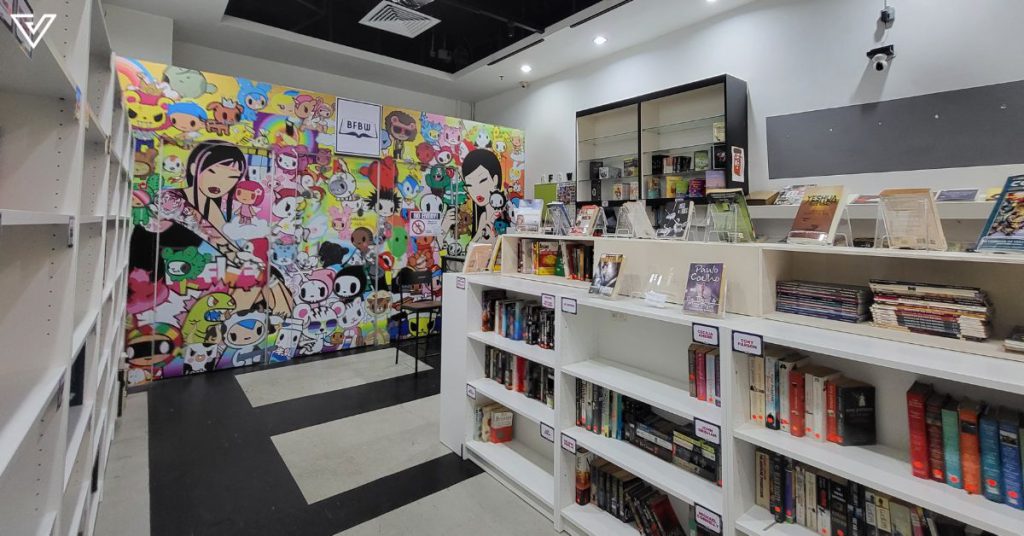
While the store itself may be unmanned, there is of course someone behind this brand. Adrian Ung, to be specific, who addressed himself as the brand’s CEO and “Chief Kuli”.
Called BFBW, or Books For A Better World, Adrian and a partner incorporated the business in March 2022. BFBW aside, Adrian runs a business management consultancy, consulting for a fresh produce company, among others, while holding a position as its Group Commercial Director.
“We started out selling books online in our personal capacity,” he said. “It was more of a hobby. We decided to open a physical store because we wanted to do our bit in giving back to society.”
Keeping costs low with the unmanned model
With two outlets—one in Paradigm Mall and one in Amcorp Mall—BFBW features a variety of books, organised and labelled based on author or genre.
Most books are priced at either RM5 or RM10, the standard numbers keeping it easy for readers to pay in cash, since there’s no cashier there to get you your change.
There are, of course, CCTVs in the store to deter any possible thefts.
This unmanned concept BFBW uses isn’t new. Another unmanned secondhand bookstore we’ve featured in the past is BUKU by PJ Preloved House.
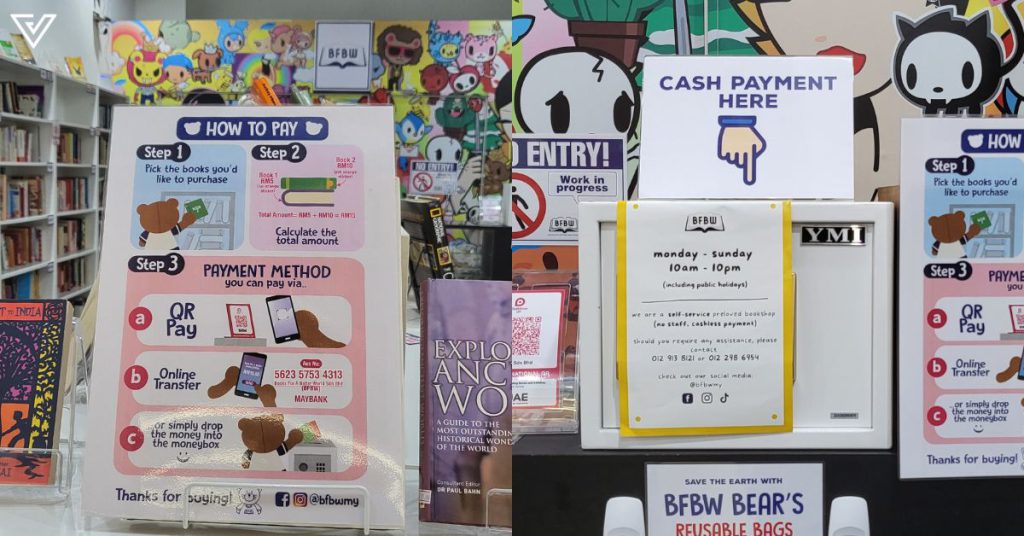
Clearly, this kind of system works well for used bookstores as it helps keep costs and prices down. This factor is especially true for BFBW, which functions as a social enterprise.
Furthermore, the startup capital came from the pockets of Adrian and his business partner, so keeping overheads low is particularly important to him.
“Thus the modest furnishings at all our stores,” he added. “We figured that the less we spend, the more we will be able to give, if you know what I mean.”
With that said, we found the furnishings to be quite nice, actually.
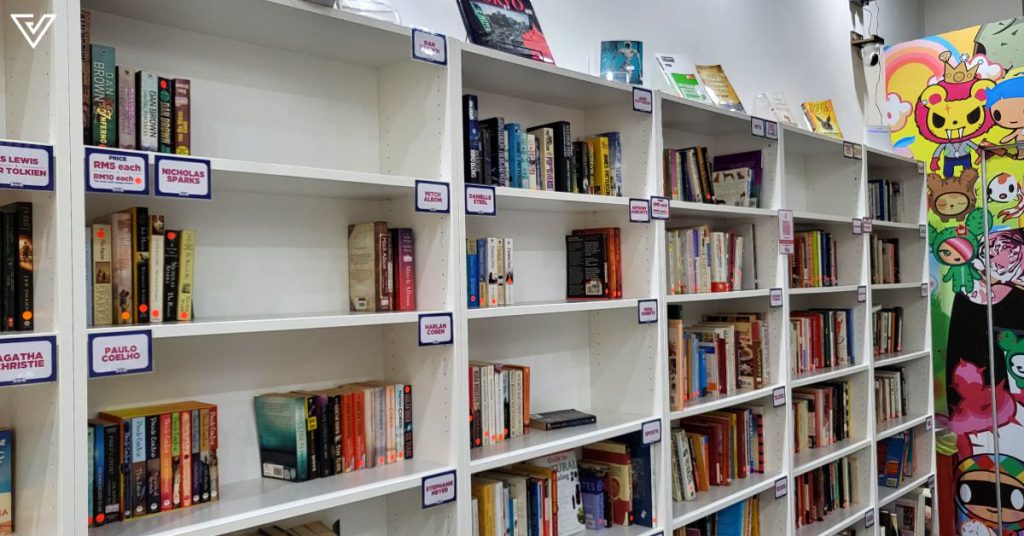
Other than just minimising costs, though, Adrian shared that there’s another reason why they went with the cashier-less system.
“As our two objectives were to promote literacy and to promote trust within the community, we felt this is a good way to encourage trust and to show the world that Malaysia ‘memang boleh’.”
Citing the sources
While secondhand books aren’t exactly hard to find, with many Facebook groups dedicated to them, BFBW buys from and works with quite a few large organisations to source their books. This isn’t just because it’s convenient, but rather, it’s to support these organisations’ charitable activities.
This includes The Salvation Army, Kedai Bless, and Parents-Without-Partners.
“We do take in donated books as a way of saving them from the landfills, and these books go a long way in helping us reach the community in need,” he added.
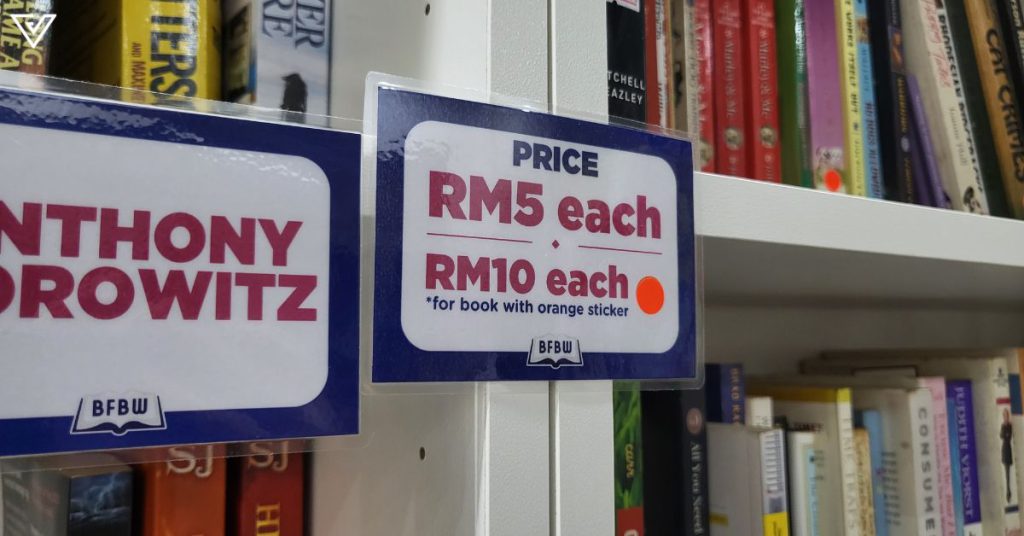
Furthermore, Adrian shared that organisations such as Baker Hughes and CIMB run book campaigns as part of their CSR programmes. At these events, their staff donates books, and these books are then given to BFBW.
After sorting the books by age group and genre, done by BFBW’s volunteers, part of these books will be channelled accordingly to charitable organisations that need them.
Peers, not competitors
A quick Google search will show you that secondhand bookstores are not hard to find. There’s BUKU by Preloved PJ House, as pointed out earlier. Another secondhand business we’ve featured is Dokusho Bookstore.
There are also a lot of individuals who list and sell their own books online.
However, Adrian isn’t particularly concerned. “The market is big enough for all of us, and we know most of the preloved bookstore owners, and sometimes we even meet up for a cuppa.”
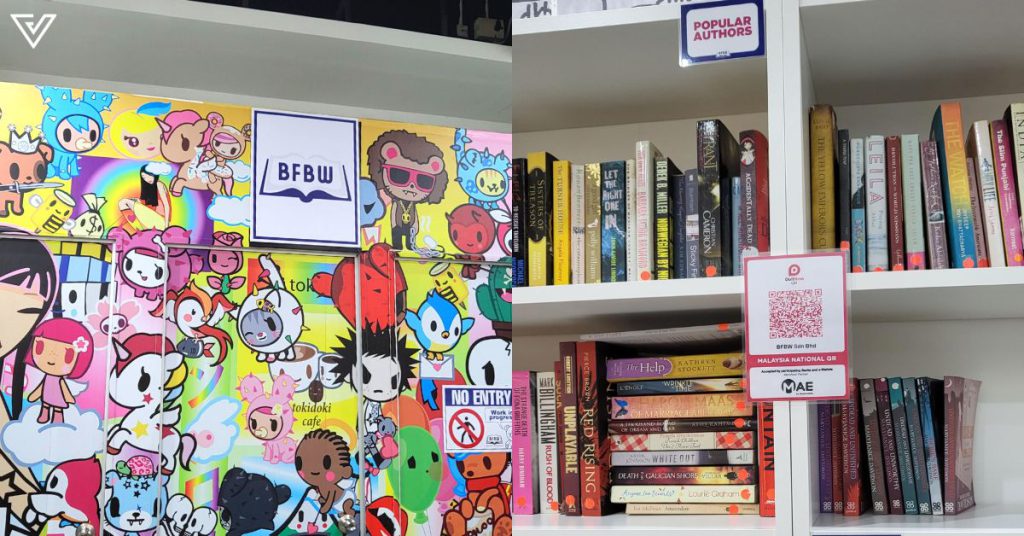
To him, it’s a friendly competition. Plus, many of these second bookstores are for a good cause.
This seems to be especially true for BFBW, which supports a variety of charities and organisations.
It donates to refugee learning centres as well as works with some ADUNs (state assembly people) in supporting their B40 community libraries and tuition centres.
BFBW also supports Persatuan Haiwan Malaysia, having pledged to contribute to them once a year. Moreover, it collaborates with Kiwanis Malaysia in their literacy programme and provides an old folk’s home with groceries regularly.
“The biggest challenge is to get dedicated volunteers and until now we still do not have enough volunteers to help out,” he shared. “Fortunately, we have five dedicated ladies who take turns in helping us out.”
Getting volunteers is important, though, as BFBW strives to continue working with organisations to impact the community by reaching out to those in need.
Other than that, Adrian said the team would like to have a presence in every state to help promote literacy to all Malaysians.
“We want to encourage corporations to do their part in impacting the community that we are in,” Adrian said. “We believe that with the combined effort of many, will we be able to create a bigger impact. As the saying goes, ‘it takes a village to raise a child’!”
- Learn more about Books For A Better World here.
- Read other articles we’ve written about Malaysian startups here.
Also Read: 6 ways to manage and protect your precious banking access from online hacks or scams
Featured Image Credit: Books For A Better World